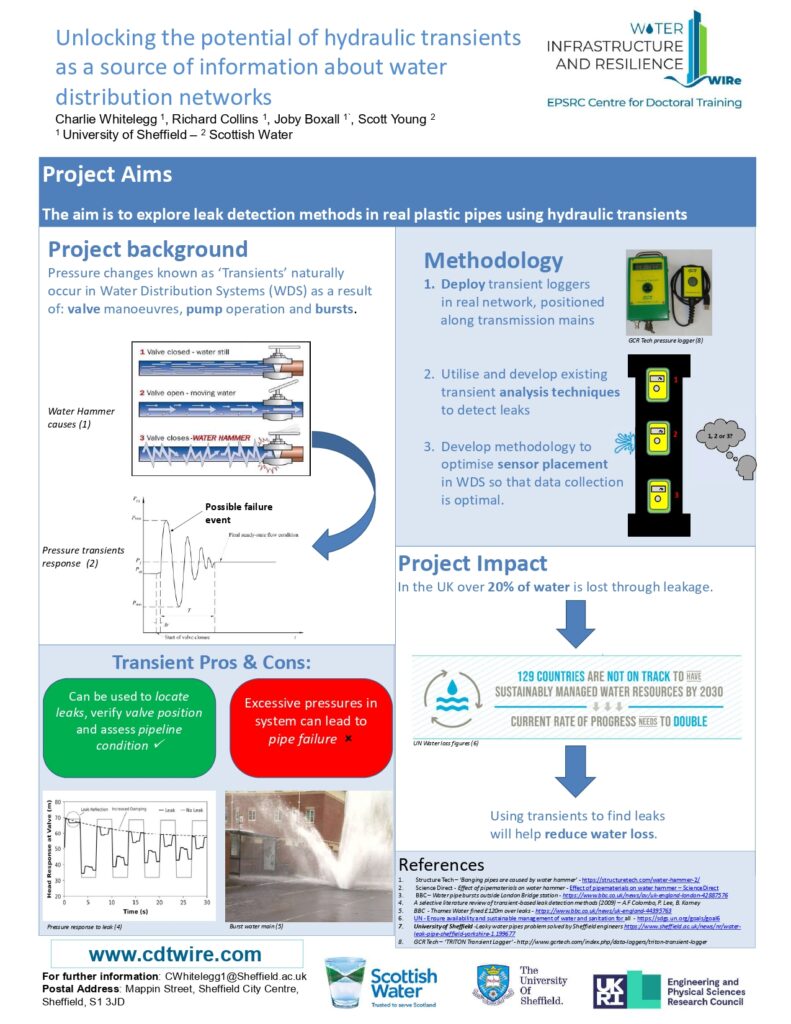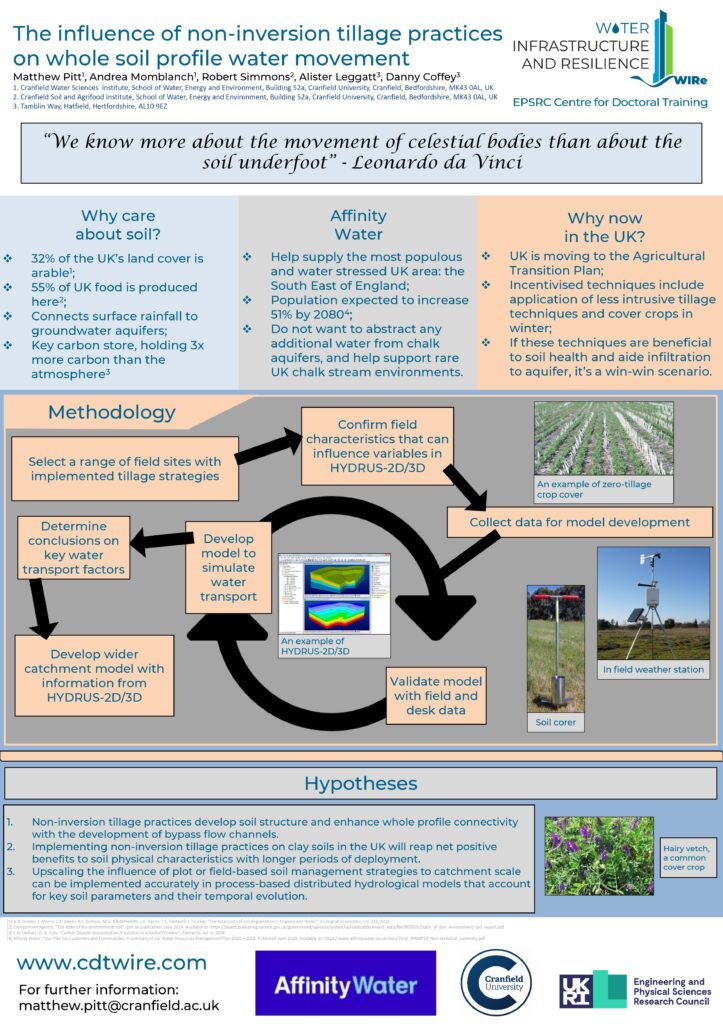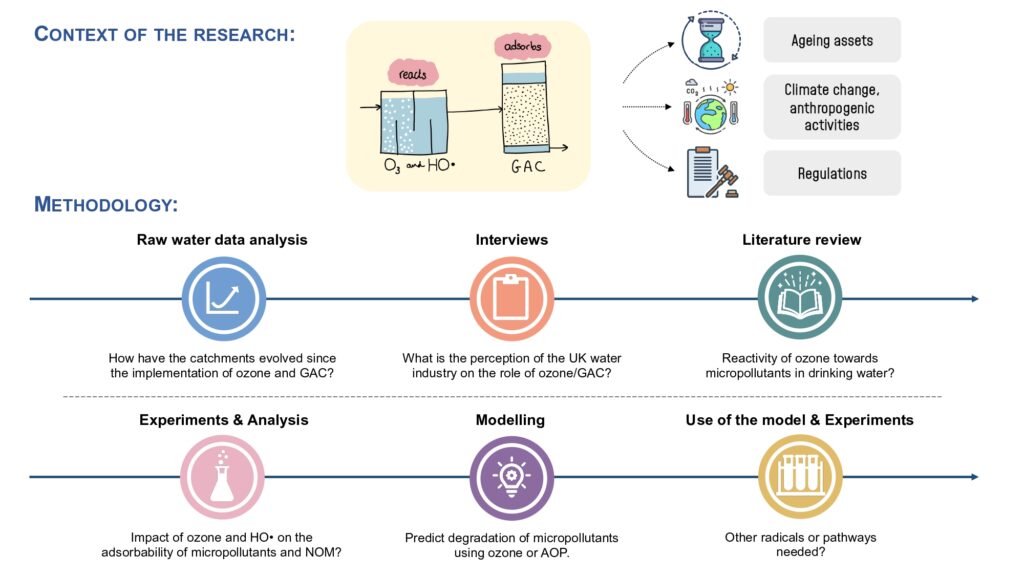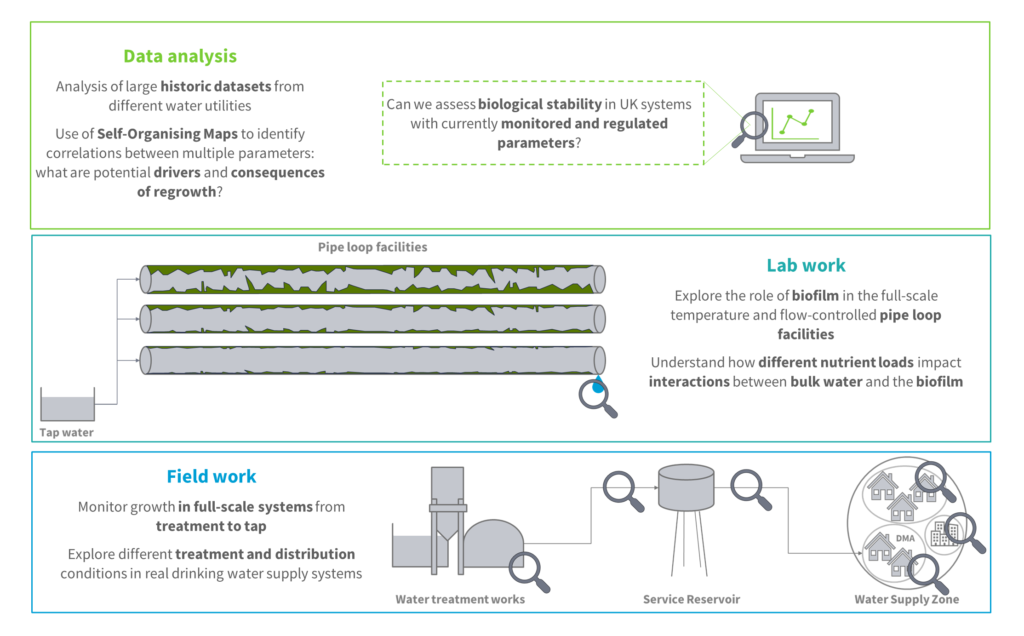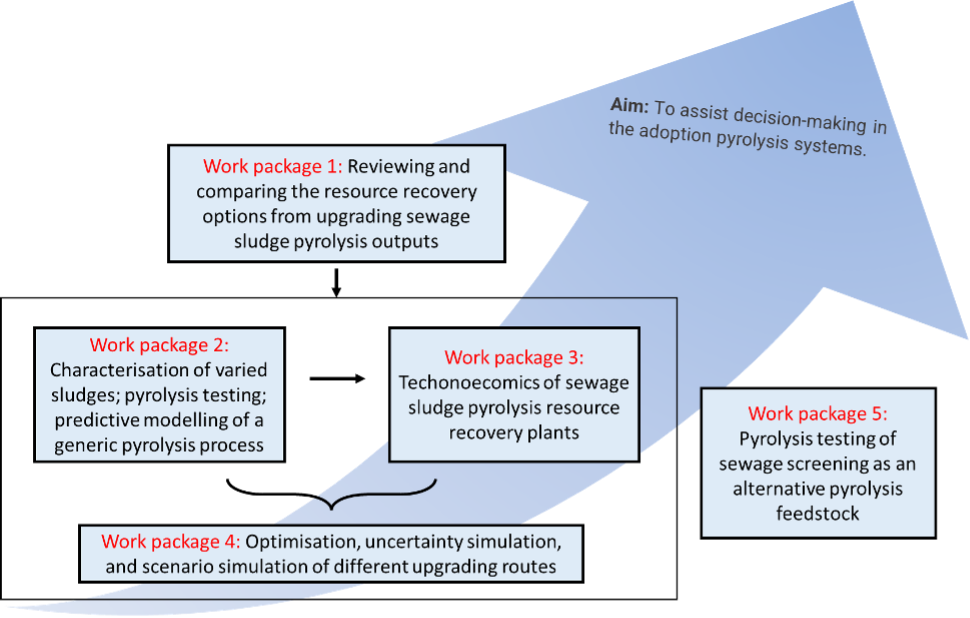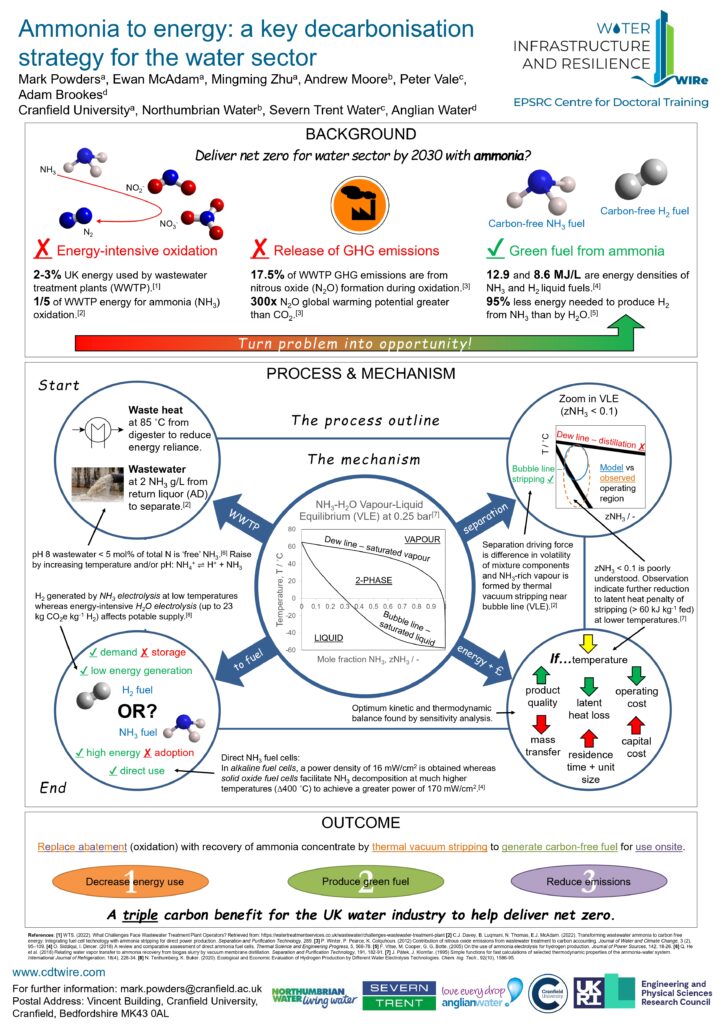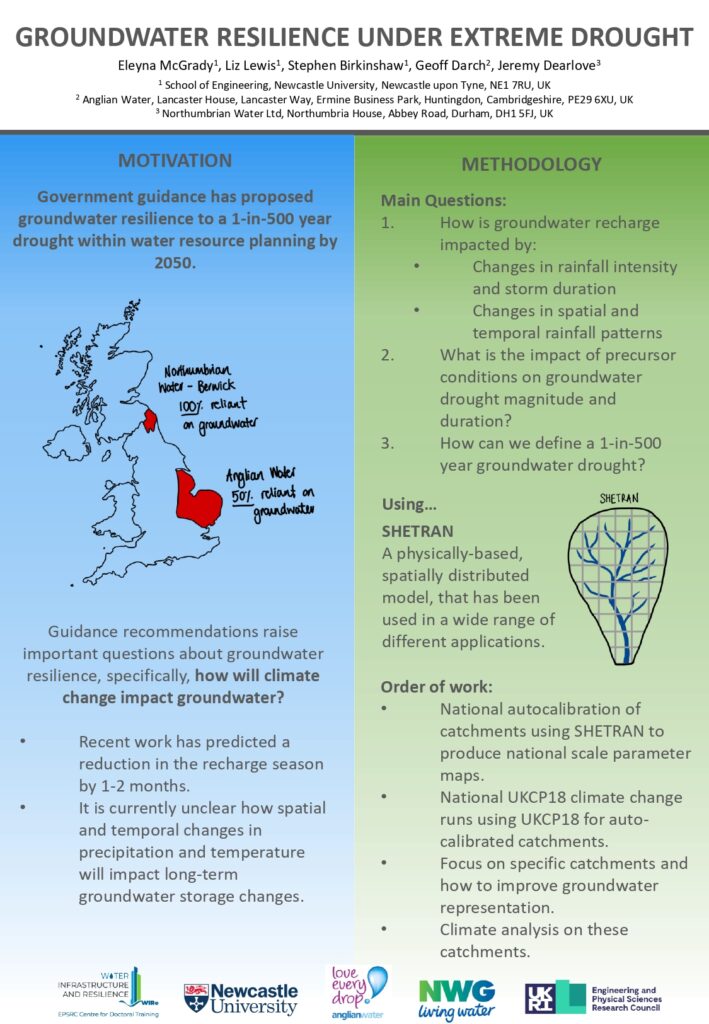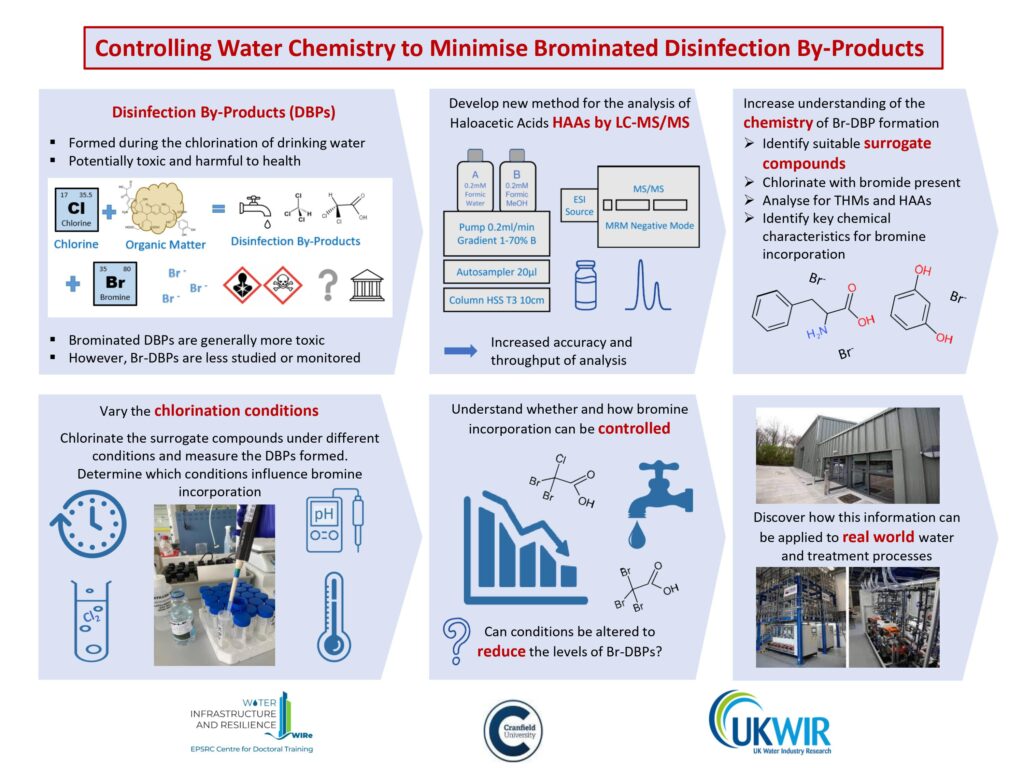Meet Samuel Nyarko
Email: [email protected]
Academic and Industrial affiliations: Cranfield University, Anglian Water, Thames Water
Title of research project: Securing drinking water supplies: the role of organic matter on water treatability

Globally, one in four cities is water-stressed, and the projected demand for water in 2050 is set to increase by 55%. The National Infrastructure Commission in the UK has estimated that an additional 1000 million litres of water per day (MLD) may be needed to secure the country’s water supply, which will be achieved through regional and national water resource planning. The Anglian Water (AW) region faces an acute water supply and demand gap due to low rainfall and rapid population growth, leading to expected water deficits of 35 and 145 MLD by 2025 and 2045, respectively. A strategic water supply network is being developed to transfer water from water-surplus to water-deficit regions, an increasingly used mechanism to improve drinking water resilience. However, the impact on water quality and treatability is unknown.
All source waters contain natural organic matter (NOM) that changes in quantity and character over time and space, so water transfers will invariably result in blends with different NOM characteristics and removal potentials by conventional coagulation and sorption processes. The hydrophobicity, molecular weight and charge control these processes and NOM characteristics also influence the downstream formation of potentially carcinogenic disinfection by-products. Thus, understanding NOM characteristics is crucial for effectively treating new water resources and blends.
Water utilities are relying on new sources of lower water quality due to revisions of abstraction licenses, increasing their reliance on surface waters. All surface waters in the AW region are from lowland catchments where NOM characteristics are not well understood. NOM has been well characterised in upland water sources, which has helped link it to treatability. For instance, UK upland sources have higher proportions of hydrophobic organic matter, which coagulation processes can effectively treat. In contrast, inputs of recycled wastewater and algal organic matter are more prominent in lowland areas, making NOM more hydrophilic and less amenable to coagulation. Currently, there is limited understanding of the characteristics of NOM in lowland surface waters that control their removal in drinking water treatment processes. This project will identify and match these characteristics with appropriate treatment methods to enhance their removal, allowing for the proactive development of strategies to treat these waters effectively for existing water treatment works and new ones that will be required.



